Every avid vegetable gardener has a garden journal and knows that planning is as essential as any other aspect of growing plants.
As important as planting, weeding, feeding, or watering your plants is working out which plants to grow and which plants will do well side by side.
If you're thinking about growing cucumbers, then you'll need to plan enough space for them, make sure they have ideal conditions, and think carefully before filling in the gaps between your cucumber plants with other plant species.
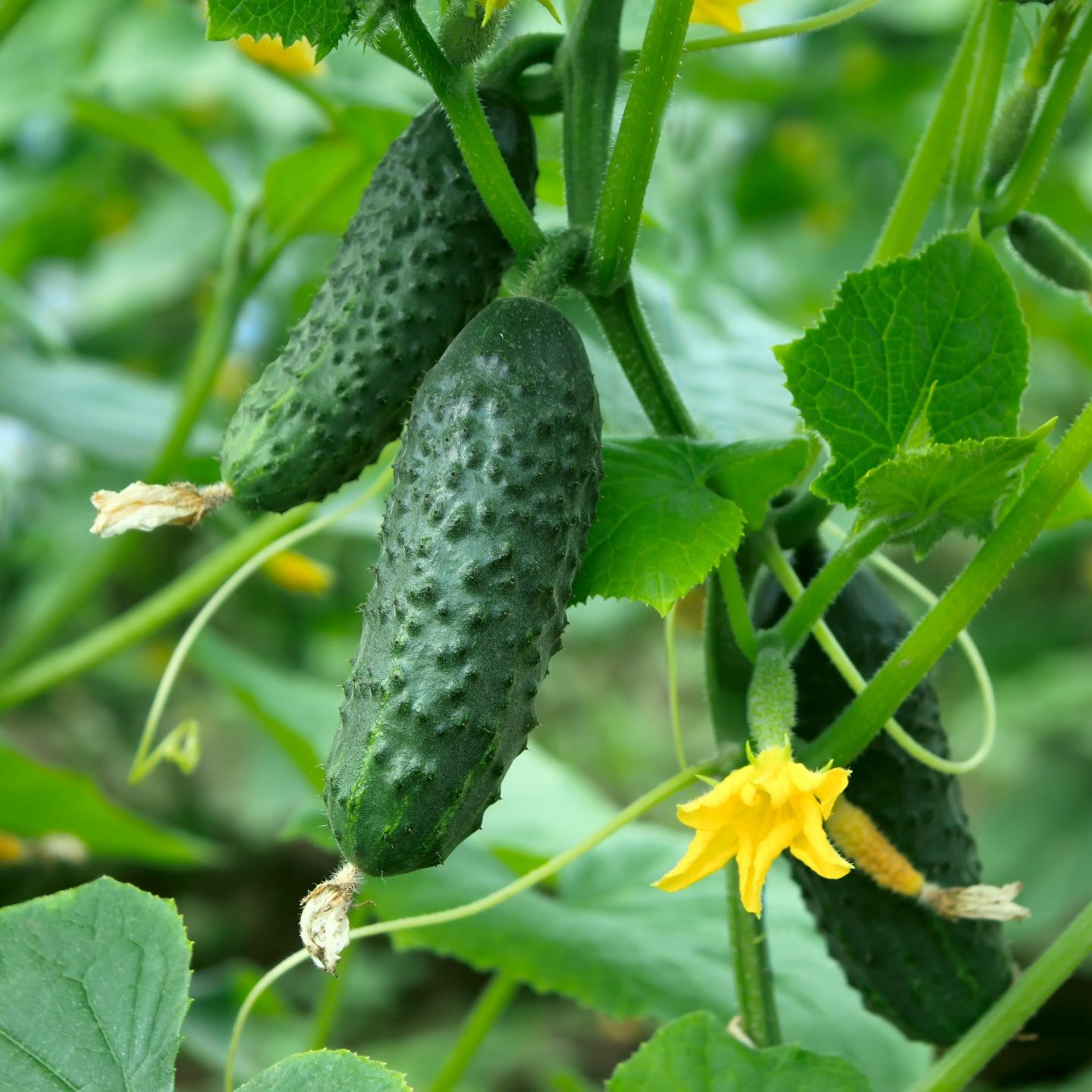
Contents
Some companions can benefit from cucumber crops or benefit from them, while others will end up competing for resources such as nutrients in the soil, sunlight, and water.
We explain all about the benefits of companion planting and help you find out which will make good budding buddies for your cucumbers and bad neighbors.
Cucumber Companion Plants: Pickle Pals
Cucumbers are among the most common vegetables grown in garden plants, and they can thrive in close proximity to some plants, so you can double up on soil efficiency and save space.
Few domestic gardeners have so much planting space that they don't know what to do with it.
Fruit and vegetable gardening seems to be diminishing in popularity, and more and more Americans are using their gardens for leisure over growing veggies.
For all that a dedicated vegetable gardener will swear that they love to sit back, relax and enjoy the sight of their vegetable patch, most people would say they would prefer to gaze at a flowering shrub or water feature, over a prickly pickle bush.
That is presumably why the square footage of our back yards is being taken over by more aesthetically pleasing but less functional plants.
Because of this, gardeners have to be more space-efficient than ever and utilize every inch of soil without depleting the nutrients in the soil by over-farming.
As a result more and more gardeners are growing cucumbers in raised beds and using a wooden garden obelisk to maximize space.
Kooky Cucumbers
Companion planting has been known to be practiced since the ancient Greeks and Romans were growing food, and cucumbers have their historical timeline.
Native to India, cucumbers, or Cucumis Sativus (that's their horticultural name), have served as food sources for more than 3000 years.
They are a popular addition to any bed designated for producing food because they are necessary to almost any salad, and some varieties are great for pickling.
Canning cucumbers was the go-to way of ensuring that through the winter, people could have access to the vitamins and minerals they needed to stay healthy despite the scarcity of natural fruit or vegetable crops that are harvestable during the coldest months.
Pickling is one way that food growers have found to prolong the life of a fresh vegetable without affecting the vitamin content of the food. Of course, some people just like pickled cucumbers because of the taste.
These days we can get fresh fruit and veg from other parts of the world if we're not picky about our food miles, but many people still choose to grow their own cucumber plants at home.
The main problems with growing cucumbers are that they take up a lot of space and need certain conditions to grow. Which is one reason we use a garden obelisk to optimize space.
To help with both of these problems, some clever gardeners started planting other plants around and between the cucumber vines or bushes to help them grow, thrive, and stay alive. Here's how companion planting works.
If something is described as a good companion plant, it means that planting this plant alongside your cucumbers will not have a detrimental effect. And in most cases, there will be genuine benefits to the feature plant.
Companion Planting: What Makes A Good Companion?
A good companion for a plant will thrive in the same conditions as the main plant. They should be comfortable in the same pH level as the staring plant and thrive in the same amount of light or shade as the bed.
Supporting players and companion plants will need to get along with the main plant, so to speak.
This doesn't mean they need to share the same taste in music, but they need to coexist peacefully without competing for water, nutrients, and so on.
You wouldn't want a large leafy shrub to prevent sunlight and rain from getting to the plant underneath, for example, or attract insects that could hurt its companion.
A few other key considerations determine whether a specific pairing of plants will be like two peas in a pod or want to split from each other before too long.
Here are a few things to consider when finding the right companion plants for your cucumber bushes or vines.
A Supportive Friend
One way companion planting works is by combining plants with opposite qualities for the benefit of one or both plants.
In cucumber terms, this might mean planting tall, strong-stemmed plants such as sunflowers nearby. Vigorous plants help vine plants like peas or cucumbers get a secure hold and support their weight and what they are growing.
Cucumbers require something to cling onto, which is far enough off the ground to ensure the cucumbers they produce won't be touching the soil.
If the fruits weigh down the vine too much and the cucumbers do rest on the soil, this is likely to negatively affect them and encourage rot or diseases to make the cucumbers inedible.
Drinking Habits
Cucumbers come in two forms: the bush varieties, which grow smaller cucumbers (often ideal for pickling).
These usually support their weight, and cucumber vines also need to be staked and have plenty of space because they can extend up to about eighteen feet in length.
The vines produce larger cucumbers and are the more common garden variety you're likely to find in a backyard vegetable patch. Either type of plant is considered thirsty because cucumbers are 96% water, so they need a good water supply and drip line irrigation is the best and easiest way to do this.
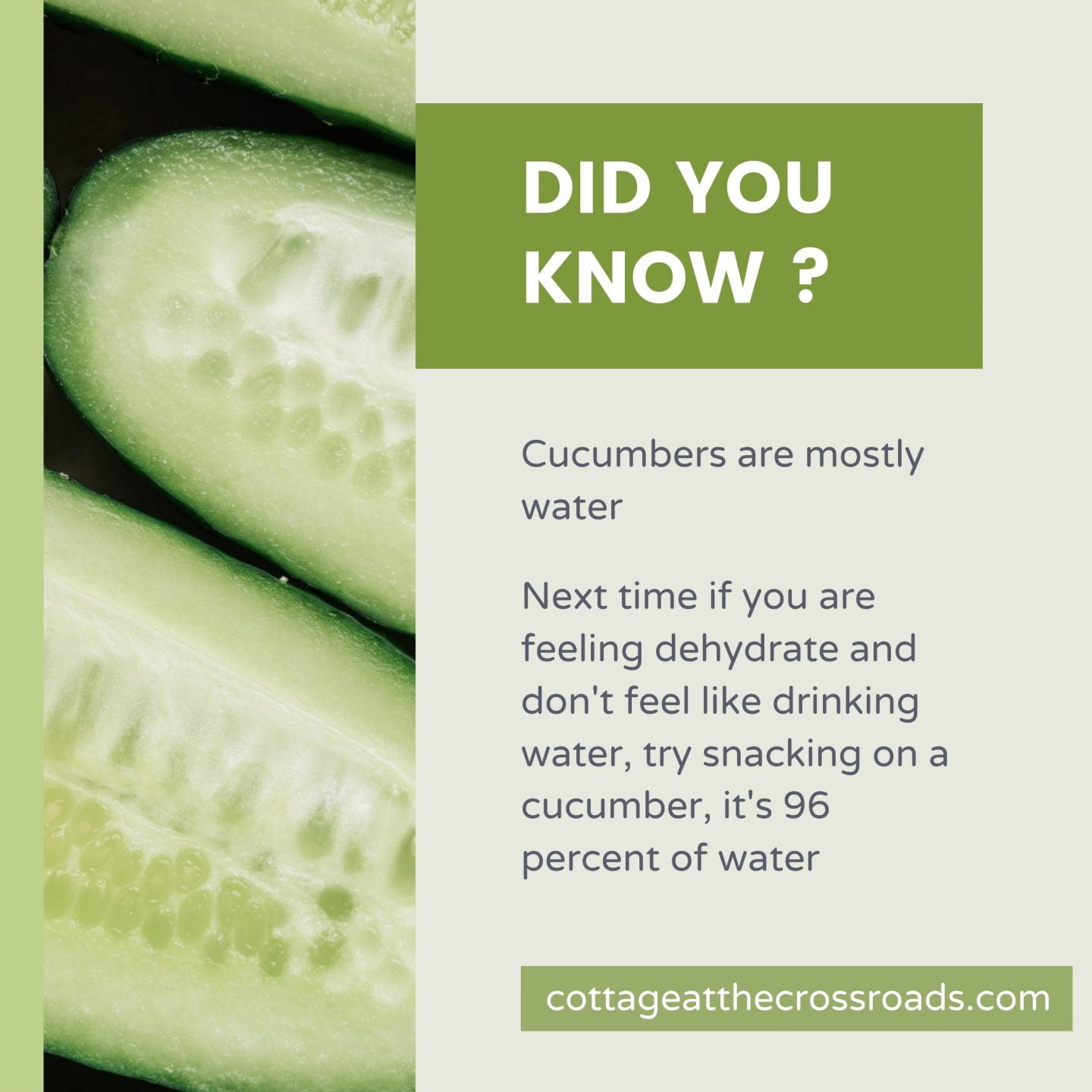
Because of this, pairing another thirsty plant with cucumber plants will negatively affect the quality and quantity of your crop.
Unlike in usual friendships, you don't want your companions to have similar drinking habits; otherwise, there will always be a moisture deficit in the soil.
It's much better to buddy up a light drinker with a groundwater alcoholic for this reason.
Transmittable Diseases
Another consideration for good companion pairing is what diseases the plants are susceptible to.
Certain insects are considered beneficial to the health of your vegetable garden, while others are considered to be pests, and it's the same with bacteria.
Plants that attract beneficial insects and aren't likely to attract diseases and blight that might affect the cucumbers are likely to make good companion plants for cucumbers.
Bee A Buddy
Certain types of cucumber plants will need insects to pollinate their flowers for you to get a crop of cucumbers.
If you have one of these varieties, you may wish to plant annual flowers that attract bees and other pollinators to help fertilize your pickles.
It can be wise to choose annuals over perennials because you won't have to work around them when clearing the ground over the colder months. Then again, some perennials can do just as good a job at attracting beneficial insects like bees towards their companions, so it's really up to you.
If you do want a pollinator buddy to attract insects, you'll need to consider timing and all the other factors we mention. The best flowers for vegetable garden vary depending on your companion plant's requirements.
This is because you'll need the cucumber flowers to be out around the same time that your companion plants are likely to bloom, or there'll be no point in their sharing a bed (you know what we mean).
There's just no point in using lilies to attract bees if you've got a vegetable plant whose flowers bloom in fall, is what we're saying.
Birds Of A Feather
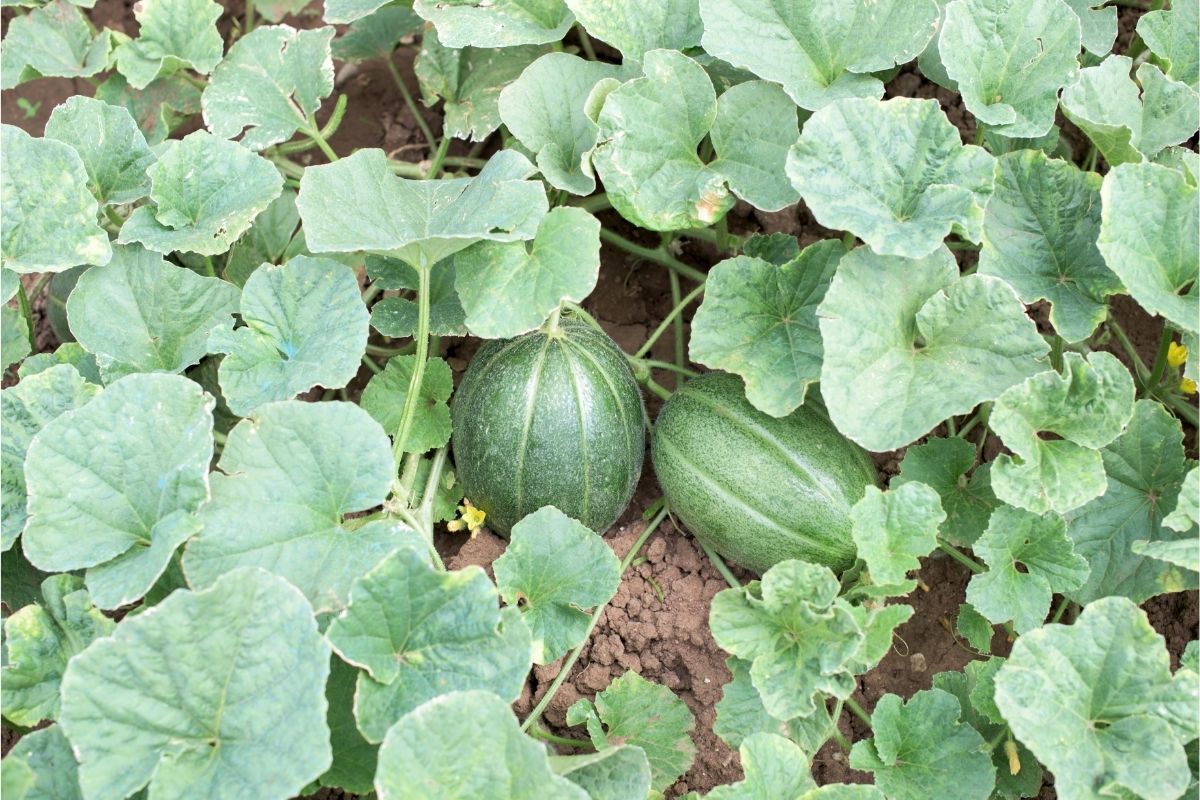
While it might be thought that a similar plant to cucumbers would make a good neighbor for cucumbers, this is not usually true.
Cucumbers are related to the melon family so that you can get novelty, hybrid varieties like cucamelons, and the likes, but this does not mean these birds of a feather should stick together.
Melons are also thirsty plants that need water to sustain the vine and create juicy fruits.
If they were put side by side, they'd be constantly fighting for water and other resources, and you could quickly end up with a mediocre crop for either or both plants.
Melons also tend to suffer from the same diseases and blights that cucumbers do since they share some genetic material, so they'll all go down for the count if one gets infected.
In contrast, very different plants from cucumbers make much better companion plants.
Playing Cucumber Cupid
The game with companion planting aims to repel pests, attract beneficial insects, and grow a great crop of fruits or vegetables.
Believe it or not, some plants will repel the very insects, pests, and diseases that can have a negative effect on the health of the cucumber plant, and some kinds of plants can be a natural support system without needing artificial garden twine or stakes to ruin the view.
As a general rule, plants that will thrive in the same environment as the cucumber plant inhabits but won't compete for resources with it are the best companions you can find for your cucumber.
Step (or scroll) this way to find some of the best cucumber companion plants and learn which plants you shouldn't swipe right to.
The Best Companion Plants For Cucumbers
Now you know a few factors you'll need to consider when finding a suitable companion plant for your cucumber crop. Let's have a look at some of the best cucumber companion plants and how they can work together for each other's benefit.
Bush Beans
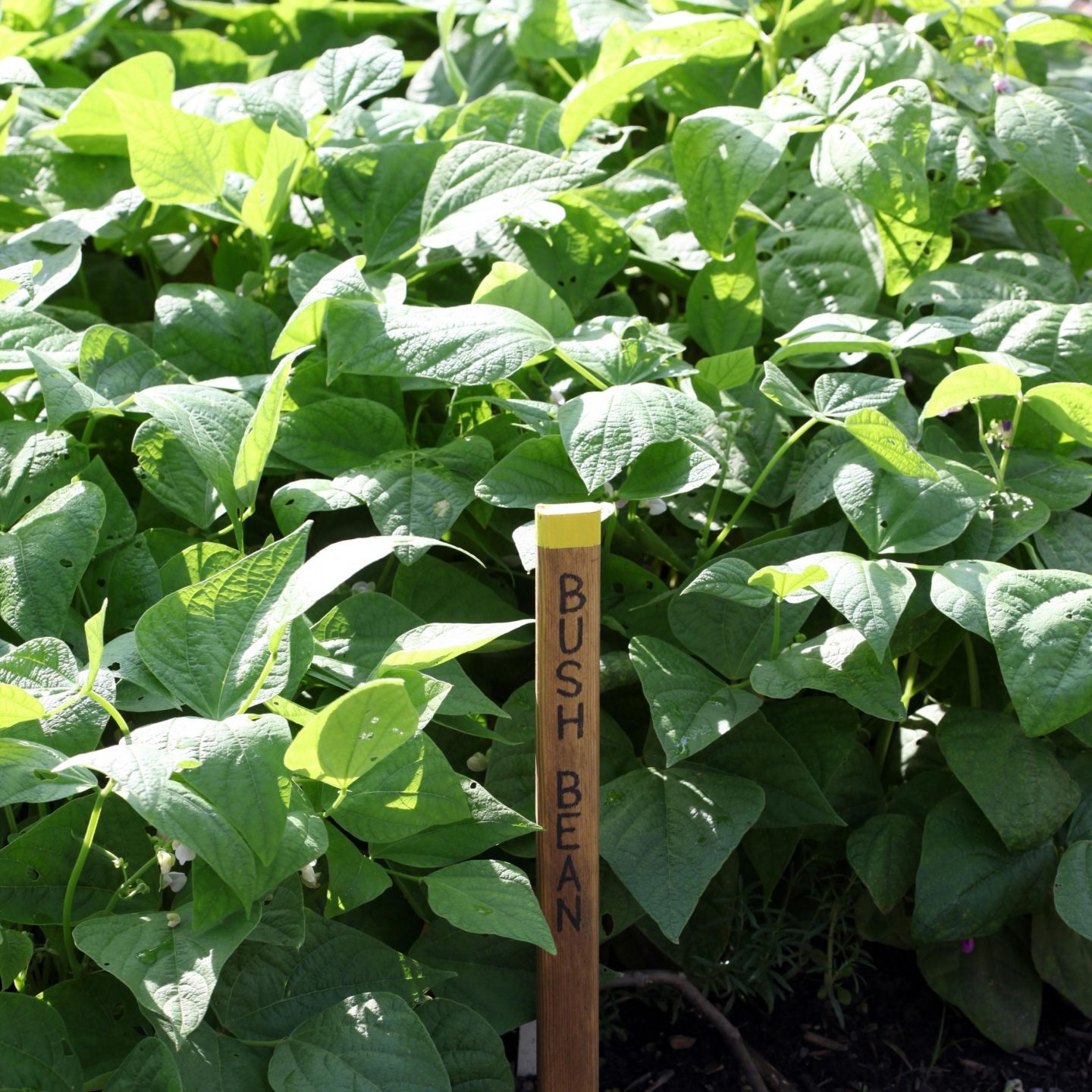
All types of bean plants have the unique ability to replenish the soil with nitrogen instead of just taking nutrients. This plant is such a generous friend and is all about giving as it provides food for its bed buddy.
The only thing that can get in the way of their happy friendship is that if the bean isn't a bush variety, then the two plants will likely end up fighting over the available room on the trellis or whatever garden structure will support them both. They'll have to compete for sunlight too.
This will mean both plants are focusing their energy on growing taller rather than producing delicious food for you. Bush beans have no aspirations of height, so they'll know their place and leave the climbing to their cucumber friends.
Borage
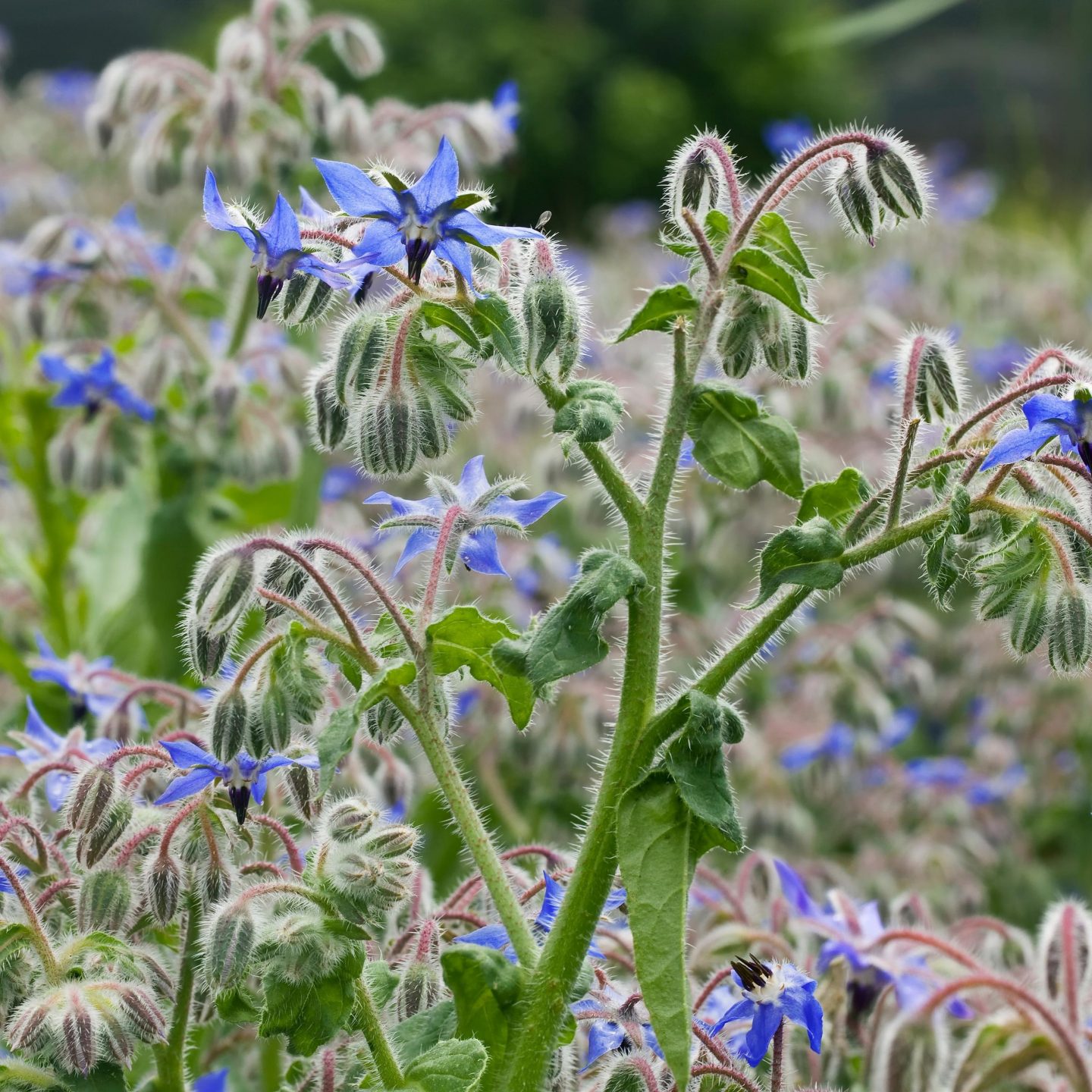
Planting borage between your cucumber vines has a few benefits, but the key one is that it attracts pollinators to the area without growing too tall.
Borage is the iceberg of plants in that a lot of its power and strength is below the surface. They have a huge taproot that burrows down surprisingly far for a little enough plant.
One upside to growing borage is that the lovely tiny blue flowers are edible and can make cute additions to ice cubes in summer drinks and the leaves are edible too, although not to everybody's taste.
Borage isn't the most pretty of companions, but it'll do the job of attracting bees and beneficial insects in the direction of your entire vegetable garden.
We'd be remiss in our duties, though, if we didn't inform you that by far the biggest drawback to growing borage is that they become like the houseguest you can never get rid of.
They won't hurt your precious vegetables, but they will invariably seed off and establish themselves wherever they like, whether they are welcome or not.
First, we should clarify that not every root vegetable is good to plant next to your cucumber plants. Carrots, radishes, beets, and onions are among the ones that are companion planting friendly for cucumbers.
Cucumbers don't need much room below ground to spread, so to make your vegetable garden very efficient per square inch, you could plant a crop of root vegetables to make the most of the space you have.
Apart from not bothering the cucumber plant, these will have no measurable benefit. Still, it will increase the yield of your vegetable plot without upsetting either your cucumber plants or the root vegetables you decide to plant, and sometimes it's just fine that everyone gets along.
They don't have to be BFFs.
Marigolds And Nasturtiums
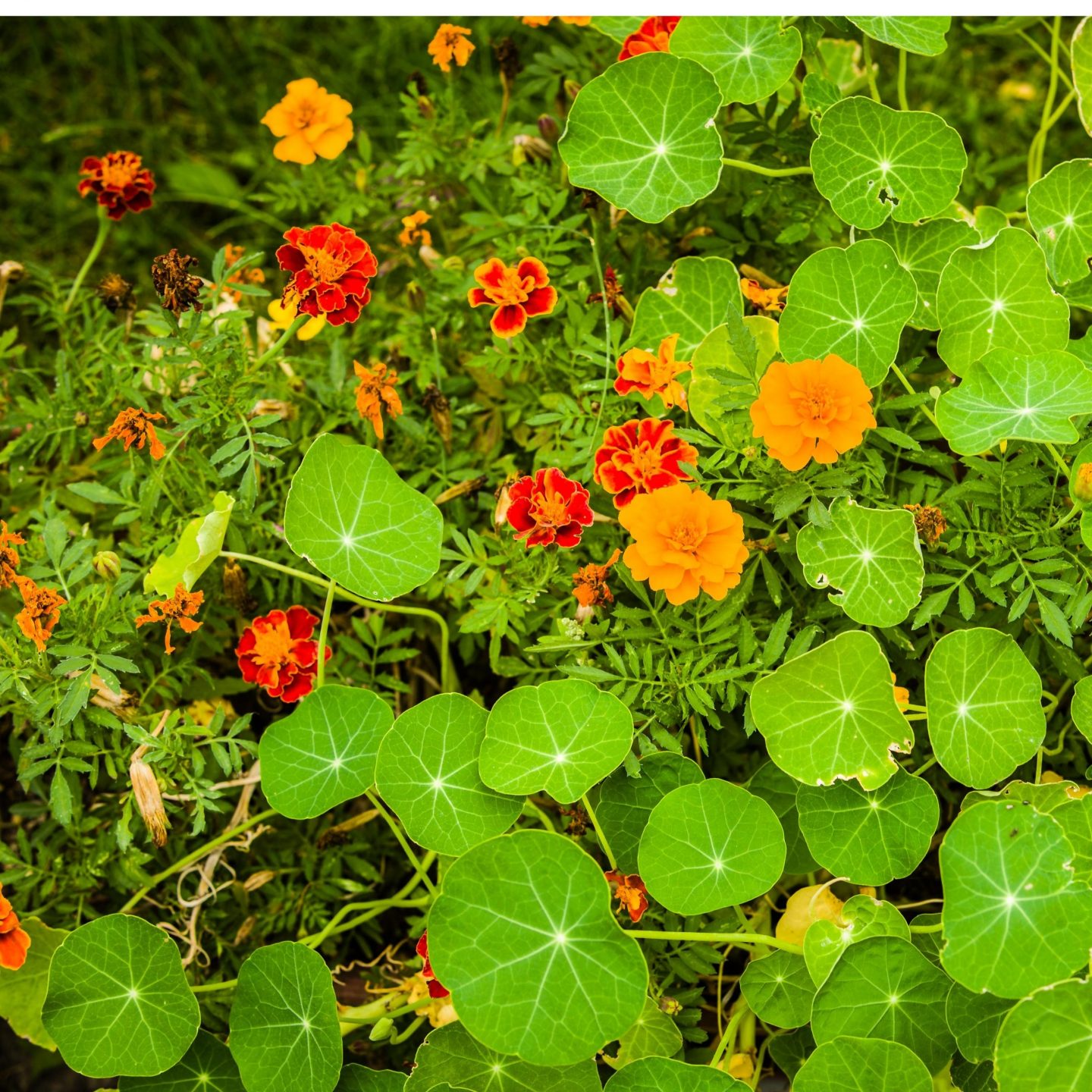
Both these flowers are great at repelling pests that can harm cucumbers. Marigolds repel beetles, and nasturtiums are a double-edged sword for cucumber enemies.
The colorful blooms attract aphids, and with a bit of luck, they'll bug your nasturtiums instead of your edibles.
They also attract beneficial insects like ladybugs that eat whiteflies and other pests that eat cucumbers.
Both nasturtiums and marigolds are pretty when in bloom too, so if you have to negotiate for real estate for your vegetable bed, these might sweeten the deal a little for lovers of flowers over food production.
With companion planting, you can have both and keep everyone happy, except for cucumber-consuming pests, that is.
Dill And Oregano

There is more than one reason why dill is often planted near cucumbers.
One of the reasons is that dill is great for adding flavor to your picked gherkins and cucumbers.
Another reason dill makes a great buddy for a cucumber plant in your garden bed is that they attract ladybugs which eat insect pests such as aphids and spider mites.
Dill earns its keep in attracting pollinators and tastes great in many dishes and sauces, so it's an excellent choice for companion planting next to cucumber.
Oregano is another of the few aromatic herbs which make good bedfellows with cucumbers as they are well-known for repelling insect pests. Still, it doesn't have a reputation for attracting beneficial insects that prey on pests.
Sunflowers
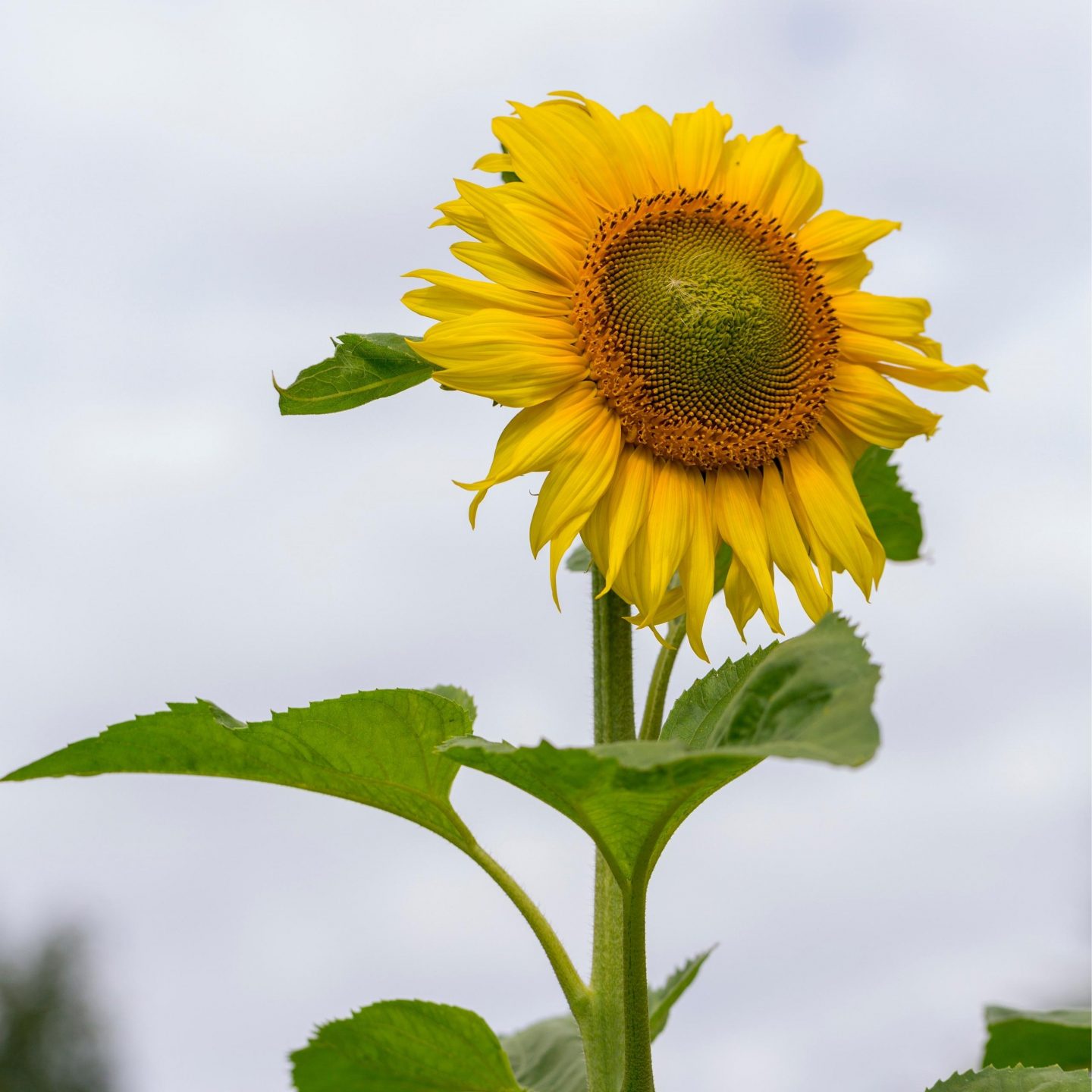
Sunflowers have the unique ability to make any onlooker smile. Who knows why? They brighten up a grey day, but that's not the only reason for planting them in your vegetable patch.
As they grow taller, their stems become very sturdy and support more than their huge yellow heads. Cucumbers and other vining plants can benefit from proximity to such a supportive friend.
Sunflowers provide a stable rod for vines to fix onto, and they aren't particularly thirsty plants, so they shouldn't argue about moisture.
Just make sure that you plant the sunflowers early enough, so their stalks are thick enough before the cucumber grabs on, and select a variety known for their thick and sturdy stalks.
Strange Bedfellows: Poor Companion Plants For Cucumbers
Some relationships just aren't meant to be, and cucumbers have their preferences just like all living things. Here are a few examples of poor choices for cucumber companion plants.
Potatoes
While several root vegetables will cohabitate with cucumbers in the same garden bed, potatoes are not one of them. One reason for this is that they require as much water as the cucumber plant will produce the crop.
Unlike with cucumbers, you won't necessarily know if a potato plant is doing poorly until the moment of truth when you dig it up, and if they are next to cucumber plants, you'll be more likely to be disappointed with their growth.
Cucumbers also encourage potato blight, a major red flag when growing potatoes.
Potato blight is the most common problem gardeners or farmers experience with potatoes, and it spreads like wildfire, so it's a serious consideration for separating the two plants.
Sage
Planting cucumbers in the same garden bed as sage has been known to stunt the growth of the cucumber plant, and it is rumored to affect the taste of nearby vegetables.
Although there is no conclusive proof that aromatic herbs can affect nearby vegetables in the same bed, it is one of the reasons why seasoned gardeners swear by having aromatic herbs with a strong scent in a separate bed from other edibles.
Mint
Mint is a very intrusive companion, so it's better off in pots if at all possible to stop it from spreading to...well, just about anywhere within five feet of it.
It is not known whether mint is also to blame for affecting the tastes of nearby produce, but why risk it, right?
Other Members Of The Cucurbitacin family
They say distance makes the heart grow fonder, but it might help you grow cucumbers too. Keeping the distant family of the cucumber distant is best for everyone. This includes gourdes, squashes, and watermelons.
We mentioned that melons wouldn't make suitable companion plants for cucumbers because of their thirst, so they'll always compete for attention.
Ahem, we mean they'll be competing for water and nutrients from the soil. There is another reason why cucumbers should ideally be kept apart from their relatives, and this is because they are often susceptible to the same pests and diseases.
If cucumbers attract cucumber beetles, aphids, or other cucumber-loving pests, these are likely to spread to neighboring plants, and they will probably think they are just as tasty.
When more than one member of the cucurbitacin family shares the same garden bed, they tend to spread diseases between the two, just like one sneeze at Thanksgiving dinner.
To avoid losing either or both of these crops, it's advised that you plant them apart in vegetable gardens.
Fantastic Cucumber Recipes
Cucumbers, Pickles, Relish, and more. If you decide to grow cucumbers this year, save these recipes. And if you have a bumper crop, my canning recipes are fantastic.
Cucum-To Think Of It: Final Thoughts
There are many good companion plants for cucumbers, and we hope we have shown you a few unexpected ones as well as the more obvious ones.
Now you are an expert on cucumber companion planting; you can get your gloves on and get to work.
Soon you'll have a bright, cheery, pest-repellent, space-efficient veggie garden you can be proud of, free from the dreaded blight of the cucumber beetles.

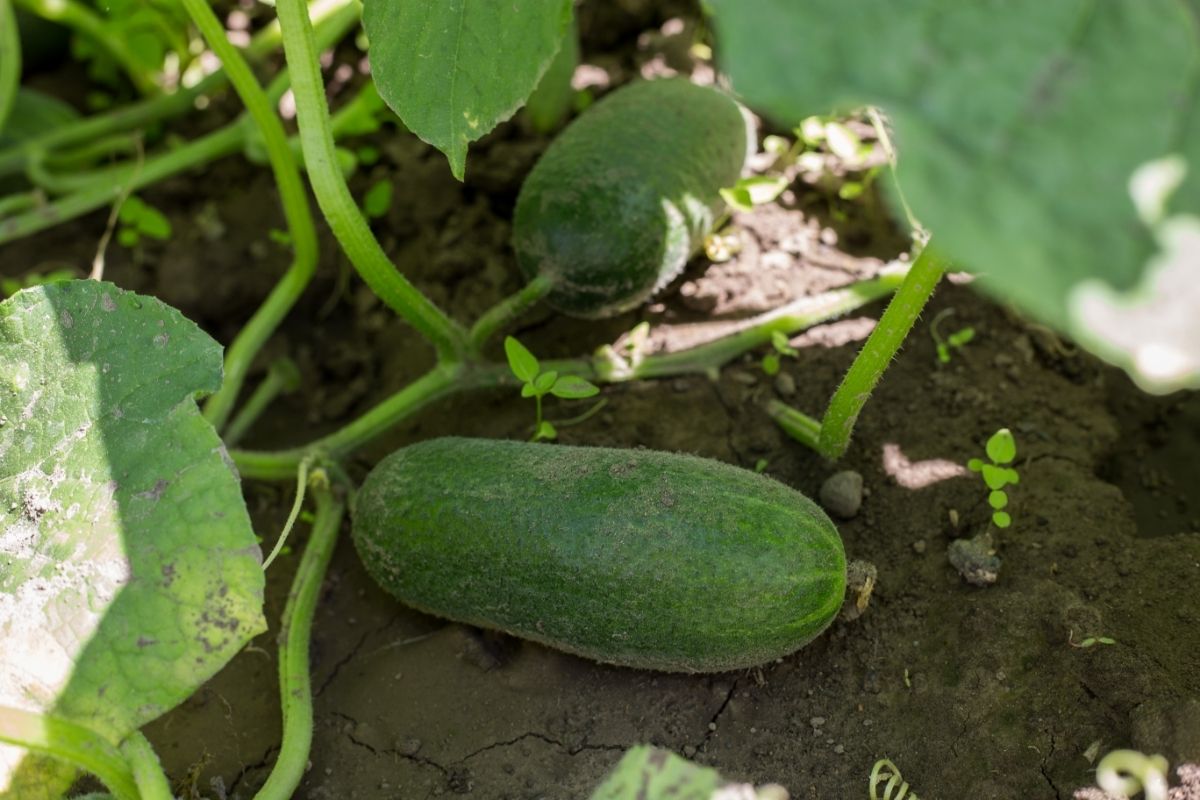

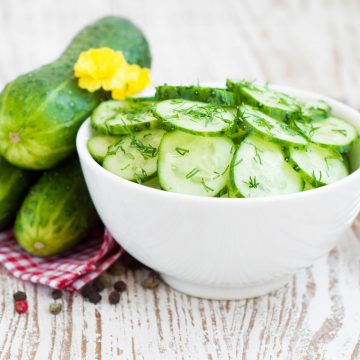
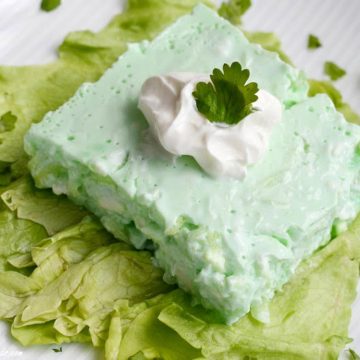
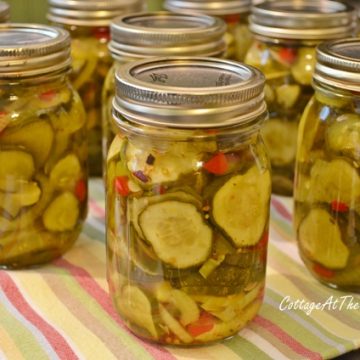
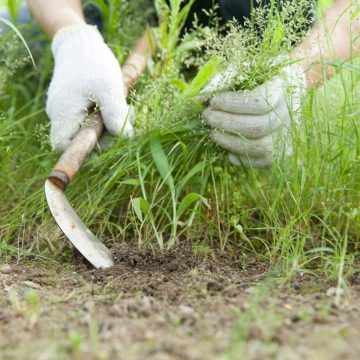
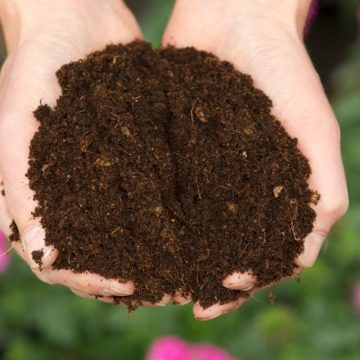
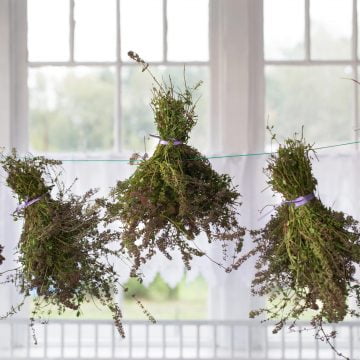

Comments
No Comments